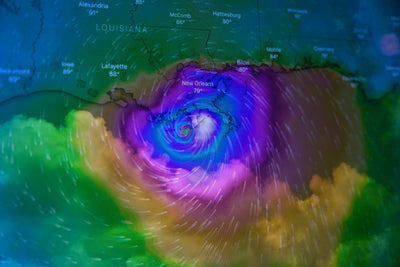
Introduction
Traveling with your dog can be a joyful experience, but for some pets, it can turn into an unpleasant ordeal due to motion sickness or carsickness. Recognizing and addressing this issue can make trips more enjoyable for both you and your furry companion.
In this guide, we’ll explore the causes, symptoms, and remedies for dog motion sickness and share actionable tips to help your pet overcome carsickness. Whether you're planning a short car ride or a long road trip, these insights will be invaluable.
What Causes Motion Sickness in Dogs?
Motion sickness in dogs is often linked to the inner ear's ability to regulate balance. Puppies and younger dogs are more prone to carsickness because their ear structures are still developing. However, anxiety or negative associations with car rides can also trigger symptoms in adult dogs.
- Immature inner ear structures in puppies
- Fear or anxiety related to car rides
- Unfamiliarity with the sensations of movement
- Previous bad experiences during travel
Immature inner ear structures in puppies
Puppies have immature inner ear structures. The inner ear plays a crucial role in maintaining balance and spatial orientation. In puppies, due to the immaturity of these structures, their ability to accurately sense and adjust to the movements and changes in position of the body is limited. When in a moving vehicle, the complex and often erratic motions such as acceleration, deceleration, turns, and bumps can cause a significant disruption in the puppy's already less-than-perfect balance and orientation sensing system. This imbalance and the resulting confusion in the puppy's nervous system can lead to symptoms of motion sickness, including nausea, vomiting, lethargy, and general discomfort. As the inner ear structures continue to develop and mature over time, puppies usually become more resilient to the effects of motion in a vehicle and are less likely to experience such severe motion sickness symptoms.
Fear or anxiety related to car rides
Fear or anxiety related to car rides can significantly exacerbate a dog's experience with motion sickness. When a dog feels anxious or scared in the car, their stress levels rise, and this emotional discomfort can intensify the physical symptoms of carsickness. Dogs that associate car rides with negative experiences—such as previous vomiting, discomfort, or stressful trips—are more likely to anticipate unpleasantness, which can trigger a cycle of anxiety and nausea.
The psychological stress from anxiety can affect the dog’s overall health, causing them to become more sensitive to motion. When a dog is tense or panicking in the car, their body produces stress hormones like cortisol, which can worsen their physical response to movement. The heightened state of alertness may also lead to behaviors like drooling, whining, or restlessness, all of which can contribute to the worsening of carsickness symptoms. In some cases, the fear of motion sickness itself becomes a self-fulfilling prophecy, where the dog’s anxiety triggers a physical response, reinforcing their negative association with car travel.
Proper training and positive reinforcement can help break this cycle by gradually desensitizing the dog to car rides and helping them form new, more positive associations with travel.
Unfamiliarity with the sensations of movement
Unfamiliarity with the sensations of movement can be a significant factor contributing to dogs experiencing motion sickness, commonly referred to as "carsickness" in dogs. This discomfort arises from the dog's inner ear, which is responsible for detecting changes in motion and balance. When a dog that is not accustomed to the feeling of a vehicle in motion, such as the starting, stopping, turning, and the overall swaying that occurs during travel, it can lead to a disruption in their equilibrium.
Previous bad experiences during travel
Previous bad experiences during travel can significantly impact a dog's tendency to develop motion sickness, or carsickness. These negative associations can lead to a variety of physiological and behavioral responses that contribute to the dog's discomfort during travel. Here's an expanded look at how previous bad experiences can influence a dog's experience with carsickness:
Increased Anxiety: This anxiety can exacerbate the symptoms of motion sickness, as stress and anxiety are known to increase the sensitivity of the inner ear, which plays a crucial role in detecting motion and balance
Behavioral Changes: These behaviors can be indicators of their discomfort and fear, which can further contribute to the development of motion sickness symptoms
Physiological Responses: The stress of previous negative travel experiences can lead to physiological responses and can be triggered or worsened by the anxiety associated with past bad experiences
Avoidance Behavior: Some dogs may develop avoidance behavior, refusing to get into the car or showing signs of distress at the mere sight of it. This is a clear indication that the dog has associated the car with negative experiences and is anticipating discomfort or pain
Recognizing the Symptoms of Motion Sickness

Identifying the signs of motion sickness in your dog can help you take timely action. Common symptoms include:
- Excessive drooling
- Whining or pacing
- Lethargy or reluctance to move
- Vomiting or nausea
- Yawning frequently
Excessive drooling
Excessive drooling is one of the most noticeable symptoms of motion sickness in dogs and often occurs when they experience nausea or discomfort during travel. When a dog feels unwell due to motion sickness, their body responds by producing more saliva as a natural reaction to the upset gastrointestine. The increase in drool is a physical response to the nausea caused by the confusion in the inner ear, where the brain receives conflicting signals from the body’s movement and the dog’s visual environment.
Dogs that suffer from motion sickness may also begin to drool excessively due to anxiety and fear. The stress of being in a moving vehicle, coupled with the uncomfortable sensations of motion, can trigger a heightened state of arousal that leads to the production of more saliva. Some dogs may even start drooling before they show other signs of carsickness, such as vomiting or lethargy, making it an early warning sign that the dog is beginning to feel sick.
Whining or pacing
Whining and pacing are common behavioral manifestations that can indicate a dog's discomfort, stress, or anxiety. These actions often serve as non-verbal cues from the dog, communicating to their human companions that something is amiss or causing them distress. Here's an expanded look at the significance of these behaviors:
Whining: Whining is a vocalization that dogs use to express a variety of emotions, often related to discomfort or a desire for attention. When a dog whines, it may be signaling that it is unhappy, scared, or in pain. In the context of travel, whining could indicate that the dog is feeling carsick, is anxious about the unfamiliar environment of the car, or is simply seeking reassurance from its owner.
Pacing: Pacing is a repetitive, back-and-forth movement that dogs exhibit when they are agitated or experiencing stress. This behavior can be a sign of restlessness, impatience, or even a precursor to aggression in some cases. During travel, a dog that is pacing may be trying to cope with the confined space of a car, the unfamiliar sensations of movement, or the anticipation of an unknown destination.
Lethargy or reluctance to move
When a dog is suffering from motion sickness, one of the prominent symptoms is lethargy or reluctance to move. Lethargy sets in as the dog's body tries to cope with the queasiness and discomfort caused by the motion of the vehicle. The normally active and playful canine becomes noticeably sluggish. It may lie down in a corner of the car, with its eyes half-closed and its body posture relaxed in an almost listless manner. Instead of being alert and eager to check out the surroundings or interact with its owner, it shows a distinct lack of energy and enthusiasm.
Vomiting or nausea
Vomiting or nausea are common symptoms that can indicate a dog is experiencing motion sickness, often referred to as "carsickness" in dogs. These symptoms can be quite distressing for both the pet and the owner. Here's an expanded explanation of how these symptoms manifest and their impact on dogs during travel:
Vomiting: Dogs that are carsick may vomit as a result of the discomfort and disorientation caused by the motion of the vehicle. This is similar to how some humans react to motion, particularly in vehicles that are moving at varying speeds or making frequent turns。
Nausea: Nausea in dogs can be harder to identify than vomiting, but it often presents as restlessness, excessive drooling, and a general unease. Dogs may appear to be more interested in finding a comfortable position or may seem to be trying to settle their stomachs
Yawning frequently
Yawning frequently is another common yet often overlooked symptom of motion sickness in dogs. While yawning is typically associated with tiredness or boredom in humans and animals, frequent yawning during travel can indicate that a dog is feeling nauseous or stressed. In the case of motion sickness, yawning is often a physical response to discomfort, as the dog’s body tries to regulate stress and manage the sensations caused by motion.
When a dog experiences motion sickness, their brain receives conflicting signals from their inner ear (which controls balance) and their eyes (which see a stable environment). This confusion can lead to stress, anxiety, and discomfort, triggering an increase in yawning as the dog attempts to self-soothe. Yawning may help to alleviate some of the tension and anxiety the dog is feeling, but it also serves as a sign that the dog is trying to cope with nausea or dizziness.
Prevention Tips for Dog Motion Sickness
Prevention is always better than cure. Here are practical steps you can take to reduce the chances of your dog experiencing carsickness:
- Gradually introduce your dog to car rides, starting with short trips.
- Ensure your pet faces forward and avoid rear-facing positions.
- Use a well-ventilated crate or harness to keep your dog secure.
- Avoid feeding your dog a large meal before travel.
- Take breaks during long trips for fresh air and bathroom breaks.
recommend a supplement to calm dogs down of motion sickness


NOORA Calming health supplement is a health supplement specifically designed for dogs to help manage everyday stress, making it perfect for situations like travel, thunderstorms, and vet visits. The active ingredients in the supplement are intended to support relaxation and calmness in dogs, reducing anxiety and stress.
| Appearance | Taste | Quantity | Weight | Components |
| chewable tablets | a natural flavor | 90 chewable tablets per bottle | 1.5 grams per tablet | Thiamine (Vitamin B1) L-Tryptophan Lemon Balm (Melissa officinalis) Powder Green Tea (Camellia sinensis) Extract L-Theanine |
Treatment Options for Motion Sickness

If your dog continues to experience motion sickness, there are several treatments available:
- Consult your veterinarian for anti-nausea medications.
- Natural remedies like ginger (in appropriate doses) may help reduce nausea.
- Behavioral training to create positive associations with car rides
Consult your veterinarian for anti-nausea medications
When your furry friend is frequently experiencing motion sickness during car rides, it is highly advisable to consult your veterinarian for appropriate anti-nausea medications. Your veterinarian, with their extensive knowledge and expertise in canine health, will be able to conduct a thorough examination of your dog. They will take into account various factors such as your dog's age, breed, overall health condition, and any pre-existing medical issues. Based on this comprehensive assessment, they can prescribe specific anti-nausea medications that are tailored to your dog's unique needs. These medications can work in different ways, perhaps by suppressing the signals in the dog's nervous system that trigger the feeling of nausea or by helping to settle the stomach and prevent the queasy sensations. Moreover, the veterinarian will provide you with detailed instructions on how to administer the medication correctly, including the proper dosage and the frequency of administration.
Natural remedies like ginger (in appropriate doses) may help reduce nausea
Ginger is a well-known natural remedy for nausea in humans and can also be beneficial for dogs. It can be given in appropriate doses to help alleviate the discomfort associated with motion sickness。 However, it's important to consult with a veterinarian before using ginger or any other natural remedies to ensure the dosage is safe and appropriate for your dog's size and health status.
Behavioral training to create positive associations with car rides
Behavioral training to create positive associations with car rides is an effective and non-invasive way to help dogs overcome motion sickness, particularly when anxiety or fear is a contributing factor. Many dogs develop negative associations with car travel due to previous unpleasant experiences, such as feeling nauseous, vomiting, or enduring a stressful journey. Behavioral training focuses on gradually changing a dog’s perception of car rides, transforming them into a positive and enjoyable experience.
This type of training involves desensitization and counter-conditioning techniques. For example, start by introducing your dog to the car in a stationary state. Let your dog explore the vehicle at their own pace, rewarding them with treats, toys, or praise for calm and relaxed behavior. Over time, you can progress to short, slow car rides around the block, always ensuring that the experience is stress-free and ends with something the dog enjoys, like a trip to the park or a play session. By repeatedly pairing car rides with positive outcomes, your dog will begin to associate travel with good experiences rather than discomfort or fear.
Additionally, behavioral training helps reduce stress and anxiety, which are often key triggers for motion sickness. A calm, relaxed dog is less likely to experience the heightened nausea or imbalance associated with carsickness. Using calming aids such as soothing music, anxiety vests, or familiar scents like a blanket from home can also complement training and make the process smoother.
Frequently Asked Questions
Q: Can all dogs outgrow motion sickness?
A: Many puppies outgrow motion sickness as their inner ear matures. However, some adult dogs may require additional help through training or medication.
Q: How can I make car rides less stressful for my dog?
A: Use positive reinforcement, such as treats or toys, to create a pleasant association with the car. Keep the ride calm and avoid sudden movements.
Q: Are there specific car accessories for dogs with carsickness?
A: Yes, anti-anxiety vests, pet seat belts, and elevated dog car seats can help improve comfort and reduce motion sickness.





